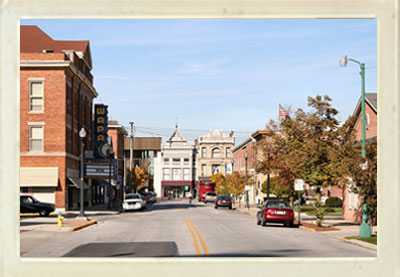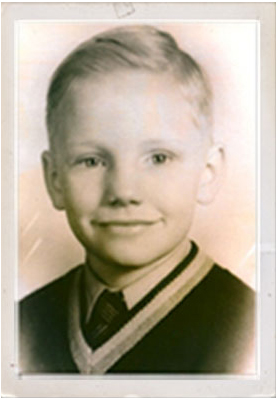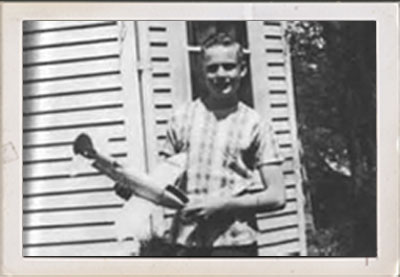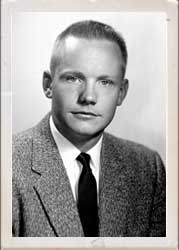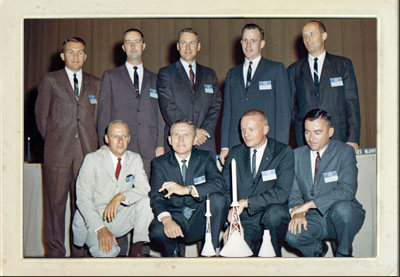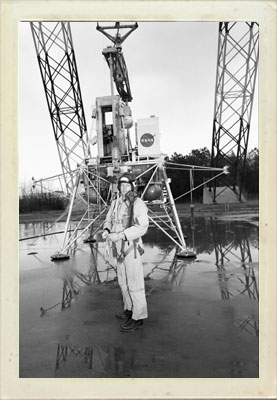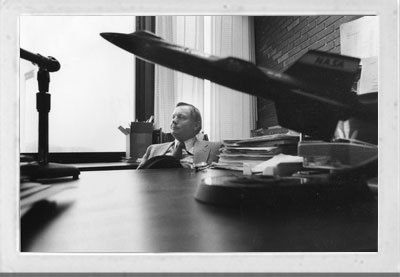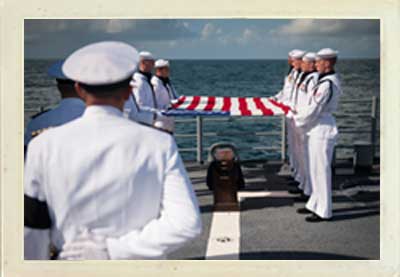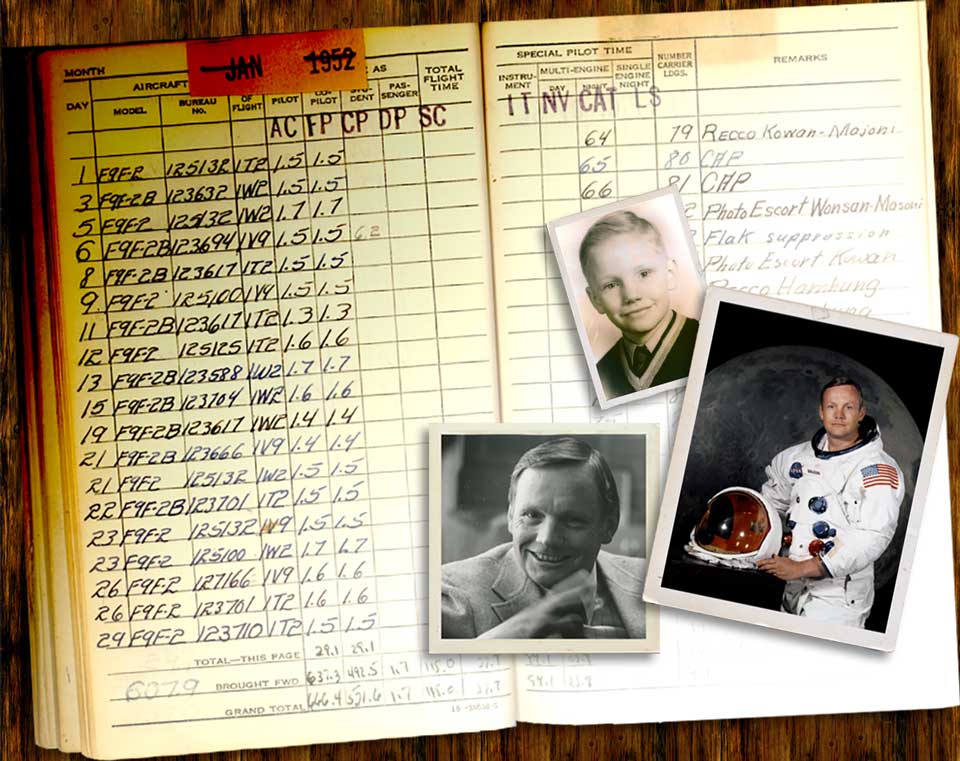
Armstrong, the Man
Neil Armstrong Career Timeline
1947
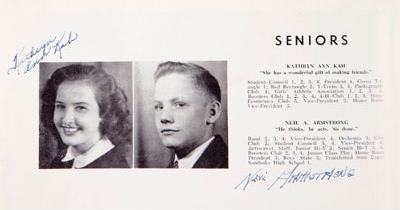
He earned his student pilot's license in 1946 before he had a driver's license. He graduated from Blume High School in 1947 and enrolled in Purdue University on a Navy scholarship.
1950

He was called to active duty during the Korean War at the age of 19, and became the youngest fully qualified Naval Aviator in his squadron when he was 20.
1955
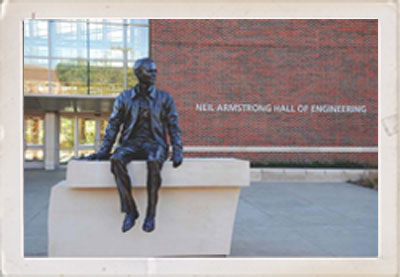
He graduated from Purdue and became a test pilot for the National Advisory Committee for Aeronautics.
1958
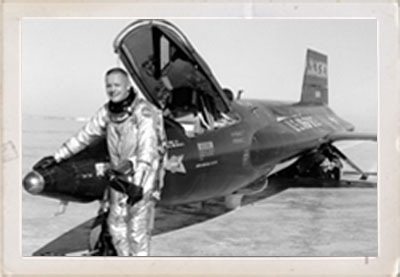
He test-piloted the X-15, in which he set a record flight having reached an altitude of 207,500 feet and a speed of 3,989 miles per hour.
1966
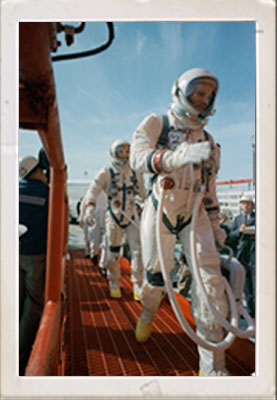
He was the command pilot for Gemini 8, completing the first successful docking between two spacecraft in orbit, but suffered the first critical in-space system failure of a U.S. spacecraft.
1969
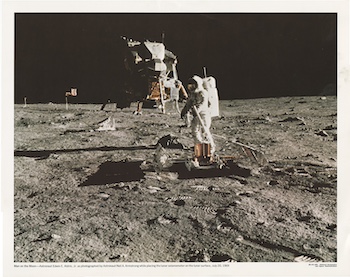
July 20, 1969. As Commander of Apollo 11, he successfully landed the Lunar Lander on the moon, and became the first man on the moon.
1970
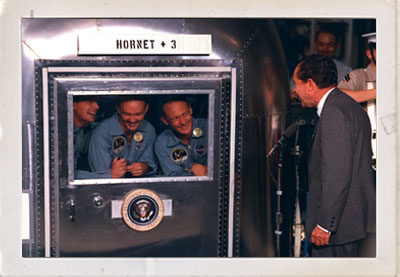
After Apollo 11, he became an executive at NASA as Deputy Associate Administrator for Aeronautics for the Office of Advanced Research and Technology.
1971

He resigned from NASA and became a University Professor of Aerospace Engineering at the University of Cincinnati.
Neil Armstrong
NASA Astronaut
Neil A. Armstrong served as a naval aviator from 1949 to 1952 before joining the National Advisory Committee for Aeronautics (NACA) at the Lewis Flight Propulsion Laboratory (later NASA’s Lewis Research Center in Cleveland, Ohio, and today the Glenn Research Center) in 1955. Later that year, he transferred to the NACA’s High-Speed Flight Station (later named for Hugh L. Dryden and now Armstrong Flight Research Center) in Edwards, California, as an aeronautical research scientist and then as a pilot, a position he held until becoming an astronaut in 1962. He was one of nine NASA astronauts in the second class to be chosen.
Armstrong is probably best known as the commander of NASA’s Apollo 11 mission to the moon, during which he became the first person to set foot on the moon on July 20, 1969.
While at the NASA center that now bears his name, Armstrong was actively engaged in piloting and engineering aspects of the X-15 hypersonic rocket plane program from its inception. He completed the first flight in an X-15 aircraft after it was equipped with a new airflow-direction sensor in its nose, as well as the initial flight in another X-15 equipped with a self-adaptive flight control system. He worked closely with designers and engineers in development of the adaptive system and made seven flights in the rocket plane from December 1960 until July 1962. During those fights, he reached a peak altitude of 207,500 feet in the X-15-3, and a speed of 3,989 mph (Mach 5.74) in the X-15-1.
Armstrong also served as project test pilot for research projects on the F-100A and F-100C aircraft, F-101, and F-104A. He also flew the X-1B, X-5, F-105, F-106, B-47, KC-135, and Paresev. He left Dryden with a total of more than 2,450 flying hours. He was a member of the USAF-NASA Dyna-Soar Pilot Consultant Group before the Dyna-Soar project was cancelled and studied X-20 Dyna-Soar approaches and abort maneuvers using F-102A and F5D aircraft.
Armstrong was born August 5, 1930, in Wapakoneta, Ohio. He attended Purdue University, earning a Bachelor of Science in aeronautical engineering in 1955. During the Korean War, which interrupted his engineering studies, he flew 78 combat missions in F9F-2 jet fighters. He was awarded the Air Medal and two Gold Stars. He later earned a Master of Science in aerospace engineering from the University of Southern California as well as honorary doctorates from several universities.
Armstrong amassed a total of eight days and 14 hours in space during two space flights, including two hours and 14 minutes walking on the moon. In March 1966, he commanded the Gemini 8 orbital space flight with David Scott as pilot that accomplished the first successful docking of two vehicles in orbit. That was followed by the famed Apollo 11 lunar landing mission in July 1969.
After leaving NASA’s astronaut corps that year, Armstrong served the agency as deputy associate administrator for Aeronautics at NASA Headquarters for two years. In this position, he coordinated and managed the overall NASA research and technology work related to aeronautics. The Digital Fly-by-Wire control system for aircraft was among the technologies he helped transfer to industry.
Armstrong left NASA in August 1971 to become professor of engineering at the University of Cincinnati in Ohio, a post he held until 1979. He became chairman of the Board of Cardwell International Ltd. in Lebanon, Ohio, in 1980 and served in that capacity until 1982. From 1982 to 1992, Armstrong was chairman of Computing Technologies for Aviation Inc. in Charlottesville, Virginia. From 1981 to 1999, he served on the board of directors for Eaton Corp. He served as chairman of the board of AIL Systems Inc. of Deer Park, New York, until 1999 and in 2000, was elected chairman of the board of EDO Corp., a manufacturer of electronic and mechanical systems for the aerospace, defense, and industrial markets, based in New York City.
From 1985 to 1986, Armstrong served on the National Commission on Space, a presidential committee to develop goals for a national space program into the 21st century. He was also vice chairman of the committee investigating the space shuttle Challenger disaster in 1986. During the early 1990s he hosted a television documentary series about aviation, entitled “First Flights.”
Armstrong was awarded the Presidential Medal of Freedom and the Robert J. Collier Trophy in 1969; the Robert H. Goddard Memorial Trophy in 1970; and the Congressional Space Medal of Honor in 1978. He was a Fellow of the Society of Experimental Test Pilots and the Royal Aeronautical Society and an Honorary Fellow of the American Institute of Aeronautics and Astronautics as well as the International Astronautics Federation. He was decorated by 17 countries and received numerous special honors.
Armstrong died on Aug. 25, 2012, at the age of 82 due to complications relating to cardiovascular bypass procedures performed several weeks earlier.
Per congressional direction, NASA’s Dryden Flight Research Center was renamed the Neil A. Armstrong Flight Research Center in his honor in early 2014, with a formal ceremony marking the redesignation at the center on May 13, 2014.

